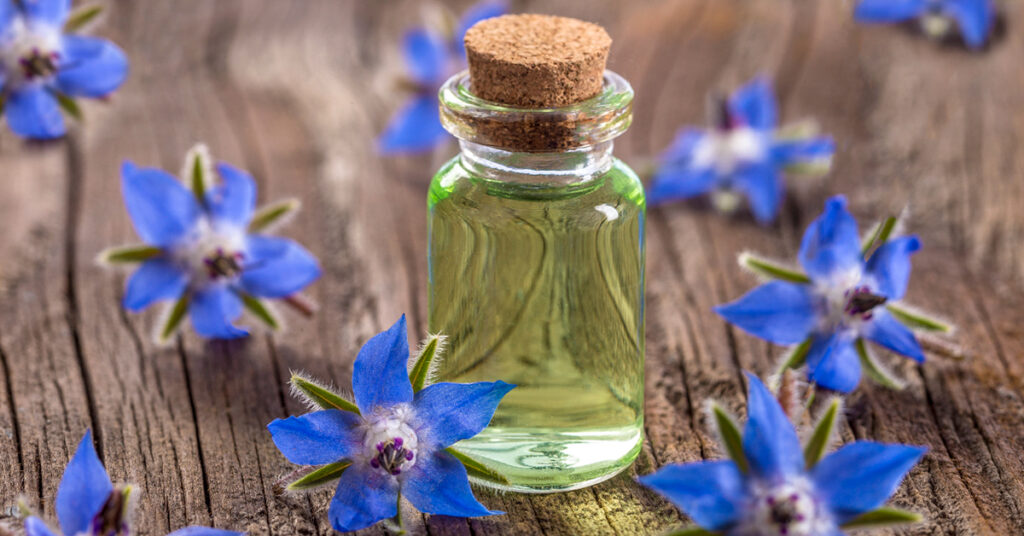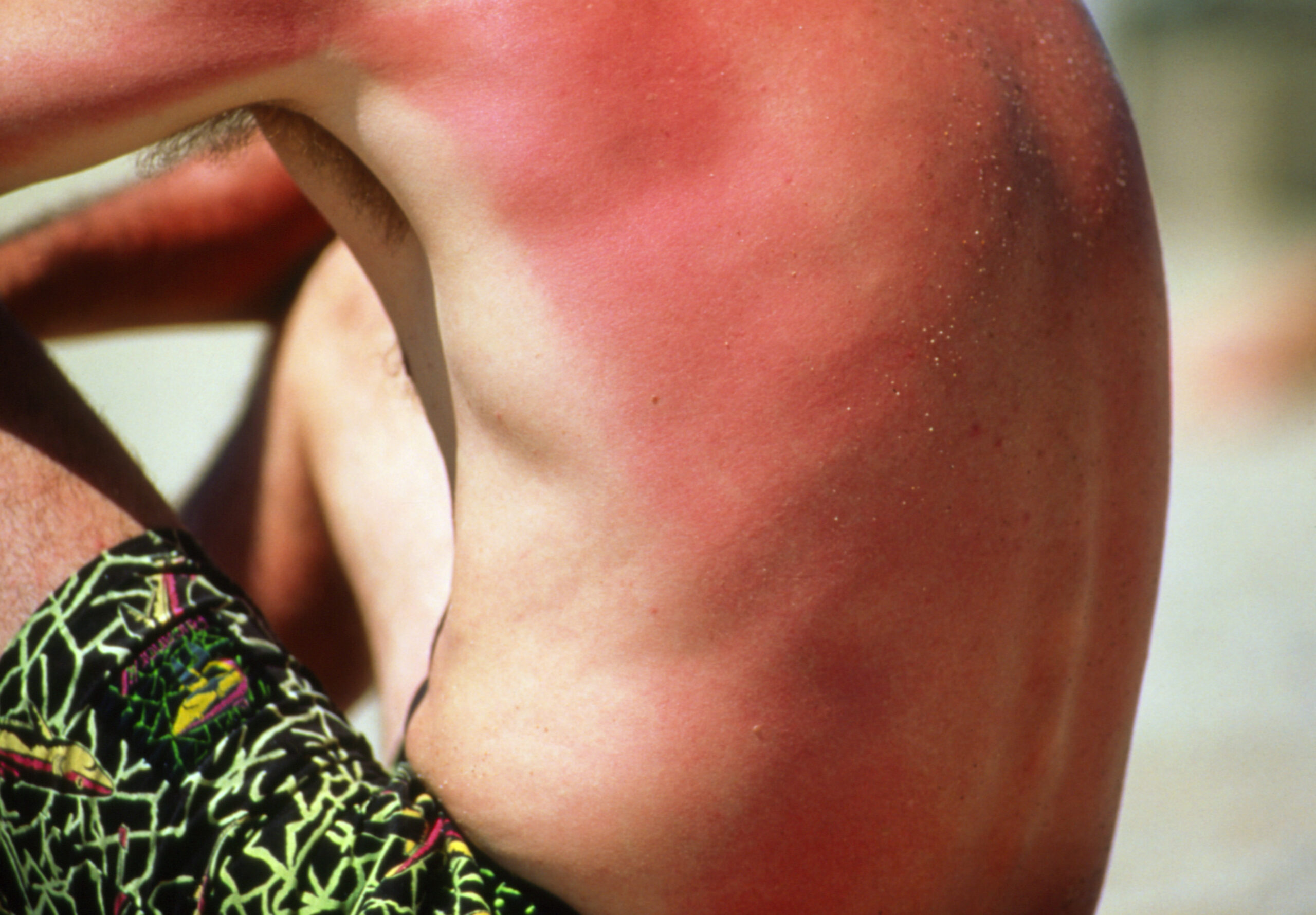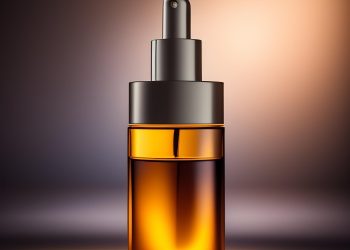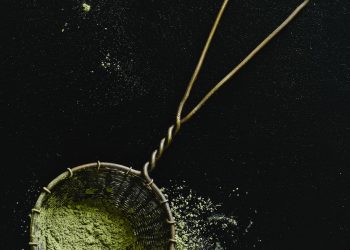Sunburn is a telltale sign that you’ve been out in the sun for far too long.
Characterized by “red, painful skin that feels hot to the touch,” sunburn is a result of overexposure to the sun’s harmful ultraviolet rays [1].
While most cases clear up after a few days, some can be more serious, and cause blisters and swelling of the skin, along with flu-like symptoms such as fever, chills, and nausea [2].
It’s also important to know that sunburn can increase the risk of skin cancer [3].
Getting relief is the first thing you’d want to do, and you can do that with the help of these simple techniques.
RELATED: 6 Essential Oils for Sun Damaged Skin
13 Ways to Get Rid of Sunburn Naturally
1. Green Tea
Most people know that drinking green tea is beneficial to one’s health.
It’s also popular as a weight loss aid.
Many drink green tea to improve their health, and drop unwanted pounds.
Now, did you know that applying it on the skin also has some positive effects, particularly for those who suffer from sunburn?
One study shows that the polyphenols in green tea extract can lower the number of sunburn cells and at the same time, tone down the damage in the skin cells caused by UV radiation [4].
To evaluate the effects of green tea on sunburned skin, the skin of the participants were treated with either green tea extract or one of its components [4].
After 30 minutes, the pre-treated skin areas were exposed to solar-simulated radiation to induce minimal sunburn [4].
Less damage occurred in the skin pre-treated with green tea extract and its compounds [4].
Most efficient in curbing the harmful effects of sun exposure are epigallocatechin-3-gallate and epicatechin-3-gallate [4].
Other photoprotective effects of green tea are related to its ability to reduce inflammation, prevent oxidative stress, and inhibit carcinogenesis in the skin [5, 6, 7].
What You’ll Need:
- 3 teabags of green tea
- 1 pot of hot water
Recommended Directions:
- Steep green tea in hot water.
- Remove the teabags.
- Let it cool.
- Dip a clean cloth in the tea.
- Gently dab cloth on sunburned skin.
- Repeat everyday until condition improves.
2. Aloe Vera
Probably the most popular use of aloe vera is for treating of wounds and scars, the efficacy of which has been confirmed in scientific research [8].
Apart from this, aloe vera has many other therapeutic purposes for the skin health, including alleviation of sunburn.
This can be attributed primarily to its potent anti-inflammatory properties [9, 10, 11].
In a study conducted in Germany, 40 participants were exposed to UVB radiation, and were treated afterwards with either 97.5 percent aloe vera gel, 0.25 percent prednicarbate, 1 percent hydrocortisone cream, or a placebo gel [11].
After 48 hours, researchers discovered that aloe vera gel worked more efficiently than hydrocortisone in alleviating reddening of the skin induced by UVB rays [11].
What You’ll Need:
- 1 aloe vera leaf
Recommended Directions:
- Slice leaf into two.
- Squeeze gel from the leaf.
- Chill gel inside the refrigerator for 30 minutes.
- Apply a thin layer of the gel on affected skin.
- Do this remedy six times a day for one week.
RELATED: 11+ Health Benefits of Aloe Vera Oil (Backed by Scientific Evidence)
3. Cool Compress
Ice packs have always been the go-to remedy for bumps and bruises.
Clinical data shows that it can also effectively get rid of sunburn and its distressing symptoms [12].
In several experiments performed on sunburned athletes, it was found that application of ice packs on the skin relieved the stinging pain, redness and inflammation caused by overexposure to the sun [13].
This is very important since heat-related conditions have caused serious injuries and death among athletes over the years [13].
Even though sunburn is not exactly a “true heat illness”, it is still closely related, as it is a “direct result of excessive sunlight exposure” and should therefore be given ample attention as well [13].
Plus, it can shoot up the risk of various types of skin cancer [13].
Apart from application of ice packs, researchers also recommend the use of cooling sprays and fans, and immersion of the body in iced waters as methods for cooling inflamed skin [13].
What You’ll Need:
- 1 bowl of ice cubes
Recommended Directions:
- Put ice cubes in a cloth, and wrap to secure.
- Gently press on affected skin to relieve stinging pain.
- Do this three to four times a day for up to one week.
4. Oatmeal
The use of oatmeal for dermatologic conditions dates back to the time of ancient Egypt [14].
Sunburn is one of the many skin problems that can be treated with oatmeal [14].
Certain compounds in oatmeal such as its polyphenols and avenanthramides have been discovered to have anti-inflammatory and anti-itch activities, alleviating the two most common symptoms of sunburn [15, 16].
Soaking in an oatmeal bath is indeed a good idea if you’d want to relieve yourself of the pain and swelling caused by staying out in the sun longer than you should have.
You may use commercially prepared oatmeal designed for topical use, or rely on regular oats that you have at home.
Either way, this natural remedy is sure to bring you the relief that you’re looking for.
What You’ll Need:
- 1 cup of oatmeal
- Bath water
Recommended Directions:
- Add oatmeal to bath water.
- Soak in the tub for 30 minutes.
- Follow this procedure once a day until symptoms disappear.
5. Yogurt
Probiotics in yogurt refer to the live microorganisms that can benefit the health when taken in sufficient amounts [17].
Many health experts have relied on probiotics for the treatment of various diseases including diarrhea, food poisoning, respiratory ailments, and urinary tract infections [17].
Yogurt is also recommended for those who can no longer bear the pain and discomfort caused by sunburn.
In a study conducted by a team of researchers from Nestle and L’Oreal, it was found that probiotics boosted the regeneration of skin cells, promoting a quicker recovery from sunburn [18].
Aside from this, yogurt has a cooling effect on the skin, which can lessen the pain, inflammation and itchiness caused by overexposure to sun.
What You’ll Need:
- 1 cup of yogurt
Recommended Directions:
- Spread a thin layer of yogurt on the affected areas of the skin.
- Let it sit for 15 to 30 minutes before rinsing with cool water.
- Do this once a day for one week.
6. Calendula
A perennial plant that belongs to the Asteraceae plant family, calendula is highly prized for its ability to treat skin problems and pain [19].
Most of its pharmacological activities can be linked to the presence of amino acids, carotenoids and flavonoids [19].
It is also a suggested treatment for sunburn, with its triterpenoids working to reduce inflammation in the skin [20].
Findings of a study performed by Indian scientists in 2012 reveal that calendula can protect the skin from UV radiation [21].
It is therefore advisable to use calendula as an ingredient for sunscreen products to protect the skin from UV radiation damage, and at the same time, maintain the skin’s natural color [21].
What You’ll Need:
- 1 cup of calendula flowers
- 1 pot of water
- 3 drops of calendula oil
Recommended Directions:
- Boil water in a pot.
- Add calendula flowers and oil.
- Remove from heat.
- Strain flowers.
- Soak a cloth in the mixture.
- Dab this cloth on the skin for 15 minutes.
- Repeat once a day for one week.
7. Myrrh
Myrrh has various applications in traditional medicine, treating a wide range of ailments including arthritis, bacterial infections, gastrointestinal problems, and fractures [22].
It’s also a potent analgesic and anti-inflammatory, which is why it’s also advisable for relieving sunburn [23].
In a study published in the International Journal of Cosmetic Science, it was reported that myrrh can protect against photo oxidation that occurs during sun exposure [24].
It works by preventing the peroxidation of squalene, a “component of sebum” that is prone to photo oxidation [24].
Contributing to this mechanism is myrrh’s antioxidants [24].
These antioxidants don’t only provide protection against sun damage but can also help ward off signs of premature skin aging such as fine lines and wrinkles.
What You’ll Need:
- 5 drops of myrrh oil
- 1 tablespoon of almond oil
Recommended Directions:
- Combine the two oils.
- Apply oil mixture on the skin.
- Let it sit for 15 minutes before wiping off.
- Use this remedy daily for one week.
8. Basil
As a traditional medicine, basil is recognized all over the world for its antibacterial, anti-ulcer and antioxidant properties [25].
Tea made from basil is used to treat bloating and nausea, while its oil extract alleviates spasms, common cold and fatigue [25].
Treating sunburn is also possible with this herb, as it has analgesic and anti-inflammatory properties, as proven in a 2012 study [26].
It can also be used for sun protection, shielding your skin from the harmful UV rays of the sun without having to use chemical-laden commercial sunscreen products [27].
Sunscreen products that you’ll find in the market usually contain strong chemicals that can have adverse effects on people’s health over time.
It’s better to rely on natural methods that won’t put your health at risk, and are safe to use even for long-term.
What You’ll Need:
- 1 cup of basil leaves
- 1/2 cup of olive oil
Recommended Directions:
- Crush basil leaves.
- Add olive oil.
- Spread a thin layer on the skin.
- Rinse with cool water.
- Follow this remedy twice daily for four days.
9. Coffee
A cup of coffee is usually what people need to get a jolt of energy so they can get out of bed each morning.
Apart from the much-needed morning boost, coffee is also a good source of antioxidants that are good for the health [28].
The lipids in coffee beans are said to provide protection against sun-induced skin damage [29].
Green coffee, in particular, has been found to be effective as a natural sunscreen [29].
It has been found to have a high ultraviolet absorption [29].
Moreover, it contains high amounts of linoleic acid, which has been proven to be good for skin health [29].
What You’ll Need:
- 1/2 cup of coffee beans
- 1/2 cup of almond oil
Recommended Directions:
- Crush coffee beans.
- Mix it with almond oil.
- Apply on the skin using a cloth.
- Let it sit for five to 10 minutes before rinsing with cool water.
- Follow remedy until pain and swelling disappears.
10. Witch Hazel
In the early years, Native Americans relied on witch hazel for the treatment of injuries and burns [30].
Today, it remains an important natural remedy that has been proven in scientific research to treat atopic dermatitis, wounds, and bacterial infections [30].
Topical application of witch hazel has been found to reduce redness and swelling of the skin caused by sun damage [31].
A German study also provides support for the use of this herb as a useful treatment for red and inflamed sunburned skin [32].
A total of 30 healthy participants were exposed to four doses of UVB radiation, and were instructed to use witch hazel and other topical formulations to treat the sunburn [32].
After 48 hours, witch hazel suppressed damage by 20 to 27 percent [32].
These rates were significantly higher compared to the efficacy of the other lotions [32].
What You’ll Need:
- 1 teaspoon of witch hazel
- 1 teaspoon of aloe vera gel
Recommended Directions:
- Combine witch hazel with aloe vera gel.
- Use this mixture to relieve sunburn on the skin.
- Repeat remedy once a day for one week.
RELATED: 12 Health Benefits of Witch Hazel That You Should Know About
11. Olive Oil
Apparently, olive oil is not only a healthy choice for cooking oil, it can also be a part of your skincare regimen.
In a study performed in the University Institute of Pharmacy in India, researchers assessed the values of sun protection factor (SPF) of various herbal oils [33].
Among the herbal oils tested, olive oil has the highest SPF, offering maximum protection against sun damage [33].
Aside from warding off sunburn, the emollient properties of olive oil can help maintain the elasticity and suppleness of the skin [33].
It can also prevent skin from getting dry even after being exposed to the wind and sun [33].
What You’ll Need:
- 1 teaspoon of olive oil
- 2 drops of peppermint oil
Recommended Directions:
- Put the two oils in a bowl.
- Mix well.
- Apply the oil blend on sunburned skin.
- Use this technique once a day until inflammation subsides.
RELATED: How to Use Olive Oil for Skin Health Boost
12. Borage Oil
Have you ever tried using borage oil on your skin?
In 2011, researchers from Serbia and India analyzed the potential of herbs as natural sunscreen and treatment for sunburn [34].
One of the recommended remedies featured in the study is borage oil.
This oil is said to stimulate the activity of skin cells, promoting a more immediate regeneration of the skin [34].
This is important as part of the healing process of damaged skin due to ultraviolet radiation [34].
It’s great to know that borage oil can easily penetrate the skin [34].
Apart from sunburn, this oil is also used to treat many other skin issues like dry skin, skin allergies, dermatitis, and skin irritation, among many others [34].
What You’ll Need:
- 10 drops of borage oil
- 1 teaspoon of aloe vera gel
Recommended Directions:
- Mix borage oil and aloe vera gel.
- Apply on the sunburned areas of the skin.
- Repeat once or twice a day for one week.
13. Evening Primrose Oil
Aromatherapists use evening primrose oil to treat many types of skin disorders.
Some of the skin ailments that can be relieved by this oil include dermatitis, eczema and psoriasis.
As you can probably notice, all of these are related to skin inflammation.
So it’s easy to imagine how this oil can also be beneficial to those who suffer from sunburn.
Evening primrose oil soothes inflammation and irritation of the skin [34].
It also promotes skin repair and rejuvenation, which is a must for sun damaged skin cells [34].
Because this oil contains a high amount of gamma-linoleic acid (GLA), it can also relieve dryness and premature skin aging [34].
What You’ll Need:
- 5 drops of evening primrose oil
- 1 teaspoon of olive oil
Recommended Directions:
- In a bowl, mix evening primrose oil and olive oil.
- Transfer to a glass jar with a lid.
- Shake to blend well.
- Pour a few drops on a cotton ball.
- Apply lightly on irritated skin.
- Wipe it off after half an hour.
- Repeat twice a day until sunburn is cleared.
Conclusion
Sunburn can be extremely painful and annoying.
It can take out the fun in spending time outdoors, particularly going to the beach.
Try these simple remedies that you can make at home to treat sunburn or to prevent severe sun damage.
READ NEXT: 11 Reasons to Use Coconut Oil for Sunburn





